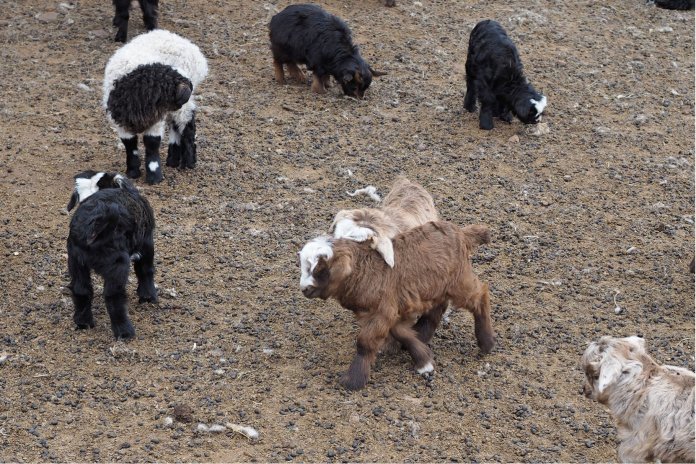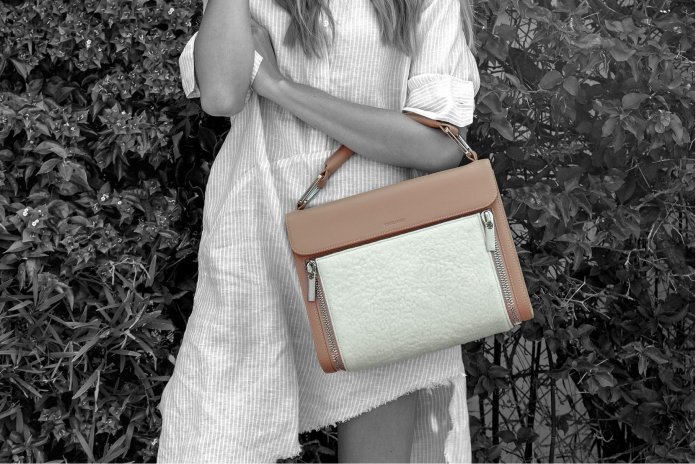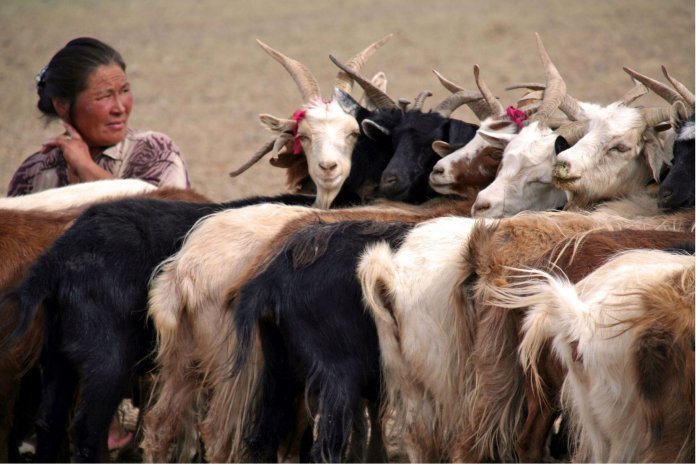We’ve always been inspired by creative thought and extraordinary quality, however they may be expressed. Join us as we explore this inspiration!

My sister went to art school, where she studied textile art. Upon graduation, she turned down Hollywood, and the dream of an Oscar, for life in the country. Kind of sounds like something an artist might do. It was actually the perfect setting to raise the animals that provided the fiber that she used to make her wearable art.
Through my sister, I was introduced to hand-made felt. It was definitely different than the round green pads I had used to prevent table scratches. It was thick, with an incredible variety of colors and textures. I loved the stuff, although I didn’t have a clue how it might be used.
Years passed and interests changed. But I was always intrigued with felt. When Virgil James started to materialize, natural hand-made felt was a material I very much wanted to use in the design of our bags. I’m pretty sure no one else felt the same way, but it wouldn’t have been the first time.
To test this sketchy thinking, I needed some handmade felt. With a couple of clicks and a credit card, I had samples in the mail, in any of 20 colors. Truly, an amazing world when anyone can get handmade felt in fuchsia! It was from Nepal and, while not exactly what I expected, I was persuaded to continue my pursuit.
The problem was, I wanted felt that was truly “luxury,” or as close to it as possible. In a moment that was, frankly, ill-conceived, I envisioned cashmere felt. The biggest challenge was that such a thing didn’t really exist, and for good reason I would later learn. It’s so liberating to be naïve!
Some background is in order.
Natural felt is typically made with sheep wool. In the spring, after the coldest weather, sheep are sheared of their wool coats. The wool fibers, which are relatively long and thick, are washed and combed into what amounts to a white willowy mass of wool fibers. To make felt, as opposed to a continuous yarn for weaving cloth, the white “cotton-candy” clouds of wool are arranged in thin layers on a large table or flat surface and subjected to hot water, matting, compressing and shaping to make sheets of felt. More layers mean thicker felt. The sheets can vary greatly in size, thickness and color (with dyes of virtually any color).
Cashmere Felt at Virgil James

This Naturale Classic bag features a removable white cashmere felt panel, handmade in Mongolia for Virgil James.
My thinking was that this process could be done with cashmere to create an ultra-soft, luxury material that we’d use as part of our bags. On the face of it this was not an entirely crazy idea. After all, felt did have an incredible heritage of development and use, and cashmere was used extensively in luxury sweaters and coats. Felt is still the material of choice for the nomadic yurts so common in central Asia.
But as we all know, such simple ideas can quickly turn into wild adventures, and so it began.
After it became clear that two clicks and a credit card wouldn’t be enough to locate cashmere felt I realized a trip was probably in the offing. My objective was straightforward. Go where felt is still handmade and locate the cashmere variety. I probably should have spent more time on the Internet but I quickly learned that cashmere is from goats – it’s the fine undercoat hair that is removed by combing, instead of shearing. It’s like an extra layer of insulation, which makes perfect sense because the best cashmere is produced in the coldest climates.
All this research was pointing me toward Mongolia! In the US, Mongolia is almost as foreign as Mars. I know more people who have climbed Mt. Everest than visited Mongolia, and I exaggerate only slightly. So I went to Mongolia.
One of the things about travel that we all love is that sense of discovery and inevitable cultural immersion (or shock in some cases). And Mongolia didn’t disappoint, but the travel story will have to wait for another day. Still, we weren’t in Kansas anymore. My business M.O. on these trips was to just start visiting and go where the referrals lead. It’s probably not the most efficient approach, but the connections and twists and turns and serendipitous events confirm my belief in at least some form of destiny.
It All Starts Here!

One goat on average delivers a mere three ounces of wool.
After literally dozens of stops, in the land of cashmere and felt, no one was crazy enough to mix the two. First, cashmere was expensive, like 15 times the cost of sheep wool. Second, and even more compelling, cashmere fibers were too short to be the ideal raw material for felt. Camel was fine, so was yak, and sheep wool was ideal. I was starting to look like a deranged tourist and, that, I know, is not a good look.
On the next to last day of my trip, my driver, a young guy from the Gobi desert who had grown up racing camels, and now tolerated tourists, suggested I meet a friend who made felt hats and boots to sell to in the local craft stores. Why not. So, in the basement of a Soviet-era apartment building, I meet Aagii Zagarkhorloo. Actually, it was more dramatic than that. Aagii, was walking out the door for a trip to the country as we intercepted her. And while she questioned the logic of making felt from cashmere, she thought, why not try.
Had I not met Aagii, cashmere felt, at least for Virgil James, would not have happened. We tested blends of cashmere and wool for a year. We tested thicknesses, colors and anything else that might affect this fantasy that slowly became a reality. As I eventually discovered, Aagii was trained in fashion, and then worked at one of the larger cashmere clothing (i.e. sweaters, coats, scarfs, etc.) factories before studying art in the Netherlands and striking out on her own. She was an exception in so many ways.
We kept at it and eventually developed a blend of sheep wool and cashmere that provided the “luxury” I was looking for. That’s always a great moment. The process continues to be an adventure. As the supply of cashmere becomes increasingly limited, we’ve started buying directly from the herders. Each spring, I find myself driving on the steppes, where no roads appear to exist, where GPS has little value, to a herder’s winter home to bargain for cashmere. Bring cash, prepare for plenty of vodka and fermented milk, and enjoy something that’s probably not much different than the days of Genghis.